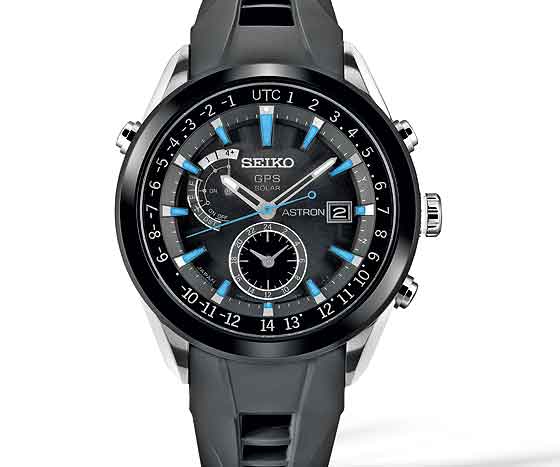The Seiko Astron, released to great discount fake watches online fanfare in 2012, tells time by receiving GPS signals anywhere on Earth. Was it a world-beater in our test? Click here to read our in-depth review of the Seiko Astron GPS solar watch, with original photographs by Robert Atkinson.
The last time Seiko called a new watch “Astron,” the future of timekeeping changed forever. Launched on Christmas Day, 1969, the original Seiko Astron watch was the world’s first commercially available quartz wristwatch. At the time, Seiko said of the Astron, “Someday, all watches will be made this way.” Today, it’s saying the same thing about the new Astron. Is Seiko right? Let’s find out. If you have not read about it, the new Astron is an analog, solar-powered watch that receives GPS satellite signals and adjusts to the precise local time anywhere on Earth. It recognizes all 39 time zones, besting the top mechanical watches, which can display 37, with a manual reset. The Astron covers the globe by first determining its location using GPS, then comparing that information with an onboard database that divides the Earth’s surface into one million squares, each of which is assigned to a particular time zone. That is something no other watch can do.
The Seiko Astron differs from watches that receive terrestrial radio signals from atomic clocks. So-called RC (radio-controlled) watches receive signals when they are within range of stations in the United States, Japan, the United Kingdom, Germany and China, so they do not offer global coverage. The Astron works anywhere, even in the middle of an ocean or desert, in Antarctica, or on a Tibetan mountaintop. Seiko Astron watches also automatically recognizes which time zone they are in, while RC watches do not.
The Astron also differs from Citizen’s limited-edition Satellite Wave, which receives GPS signals, but lacks a GPS geo-location function so it does not change time zones automatically. Finally, though the Astron is a GPS receiver that knows precisely where it is, it can’t direct you to that new restaurant downtown, or tell you how far it is to the 14th green. It uses GPS solely to tell time.
When you take an Astron out of the box, it may have to be charged. The Astron is powered by light – any type of light will charge its battery, but sunlight is the most efficient energizer. The charging status is displayed via an “E – F” (Empty – Full) indicator between 9 and 10 o’clock. The power reserve when fully charged is two months in active mode and six months in sleep mode. In sleep mode, the Astron does not display the time until it “wakes up” discount watches replica y being exposed to light. It takes only six minutes of sunlight to provide enough power for the Astron to run for one day, but going from empty to fully charged requires 65 hours of sunlight. The GPS receiver will not operate when the watch is low on power, so regular charging is important. The Seiko Astron performs two basic types of operations with GPS signals: it can automatically and manually sync to a single satellite to make sure its local time display is accurate, and it can be manually triggered to change time zones, which requires at least four satellite signals.
The Astron automatically attempts to sync with a single GPS signal once each day. The sync can be set in motion by exposure to the sun or another strong source of light. The Astron’s programming tells it that if a strong light source is present, there’s a good chance it can receive a signal. If the Astron acquires a signal, it remembers when that happened. On subsequent days, if the watch is covered by clothing or otherwise blocked from light, it searches for the signal at the same time as the last successful attempt, assuming the chances for reception are good. To make sure it’s always on time, the Astron can also receive leap-second data. Leap seconds are added about every luxury fake watches online store 18 months to account for the Earth’s slowing rotation. The most recent was added on June 30, 2012.
